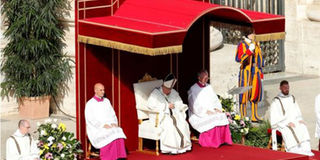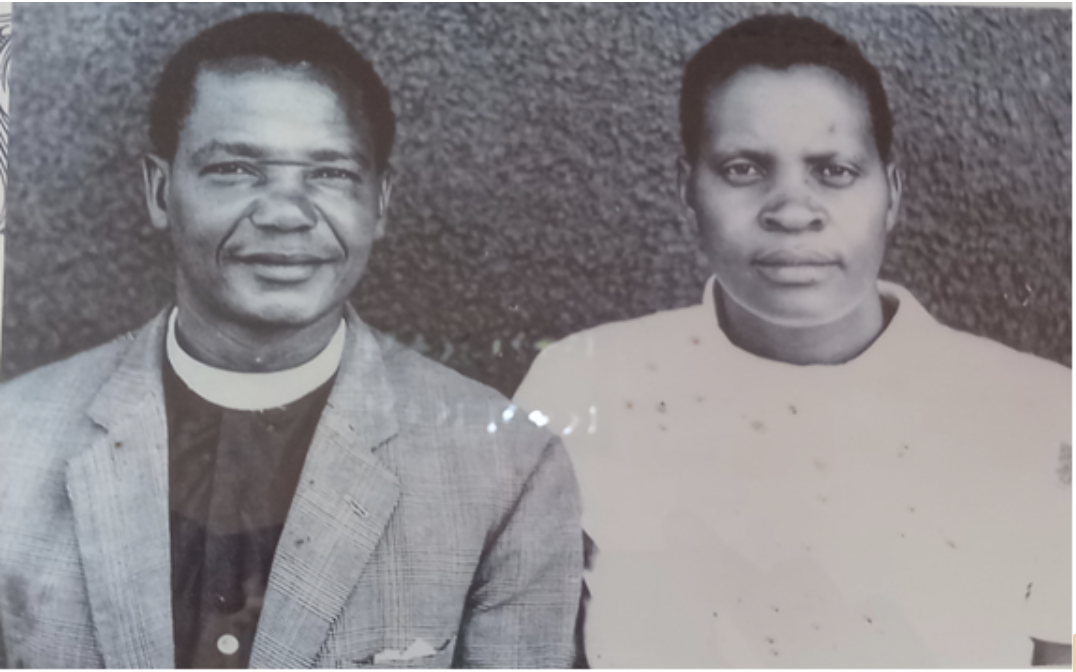Pope elevates British convert Newman to sainthood

Pope Francis led the open-air service in St Peter's Square, Rome, attended by tens of thousands. Reuters Photo
Pope Francis created five new saints on Sunday, including Britain's Cardinal John Henry Newman one of the Catholic Church's most renowned converts -- and a nun dubbed the "Mother Teresa of Brazil".
Heads of state from across the world attended the canonisation ceremony, which also raised a Swiss laywoman plus two other nuns -- an Indian and an Italian -- to the highest position within the Church.
"Today we give thanks to the Lord for our new Saints," the pope told the faithful on Saint Peter's Square.
"They walked by faith and now we invoke their intercession."
Prince Charles, future head of the Church of England, led the British delegation honouring Newman, a 19th-century Anglican theologian who went on to become one of the Catholic Church's leading thinkers.
Francis quoted Newman describing "the holiness of ordinary life" in which, "the Christian is cheerful, easy, kind, gentle, courteous, candid, unassuming; has no pretence... with so little that is unusual... that he may easily be taken at first sight for an ordinary man."
Born in 1801, Newman attempted to "renew" the Anglican Church, before becoming convinced that Catholicism was the only true faith and converting aged 44, rising through the hierarchy to become a cardinal.
Giant portraits of the new saints were hung from Saint Peter's Basilica for the ceremony which attracted tens of thousands of pilgrims.
'Miracles' -
The pope noted that three of the new saints were religious women, showing "that the consecrated life is a journey of love at the existential peripheries of the world".
But the fourth, Marguerite Bays, was a seamstress, a laywoman from Switzerland known for bearing the stigmata wounds corresponding to the injuries Christ suffered on the cross.
"She speaks to us of the power of simple prayer, enduring patience and silent self-giving," Francis said.
Born in 1815, the second of seven children, Bays showed an intense faith from very early on, often breaking off from playing with other village youngsters in order to pray quietly, according to the Vatican.
Despite suggestions she should become a nun, she instead began an apprenticeship as a seamstress aged 15.
Bays underwent surgery for bowel cancer in 1853, and prayed to the Virgin Mary to heal her, offering to swap her disease for the pains experienced by Jesus. The Church says she was cured but given the stigmata in exchange.
Every Friday, she would be immobilised in "ecstasy" as she relived the suffering in body and mind, it says.
Most new saints must have two "miracles" to their names -- usually scientifically inexplicable healings, attributed to prayers.
Newman is credited with curing an American man from Boston with a debilitating spinal disorder, who claimed in 2001 he could suddenly walk again after praying to the British cardinal.
His second "miracle" -- the inexplicable healing of a woman with a "life-threatening pregnancy" was approved this year.
'Mother of the poor'
Bays was canonised alongside Brazilian Sister Dulce Lopes Pontes, who was a member of the Missionary Sisters of the Immaculate Conception and considered a "mother of the poor".
Born in 1914 into an upper middle-class family in Salvador, she started a health clinic for poor workers and opened a school, a hospital, and an orphanage, as well as care centres for the elderly and disabled.
Sister Dulce, dubbed the "good angel of Bahia", was nominated for the Nobel Peace Prize in 1988.
She was visited in hospital the year before her death by Pope John Paul II, who called her work "an example for humanity".
Tens of thousands of people attended her funeral in 1992.
How to become a saint
The Church puts candidates through meticulous vetting and in most cases two "miracles" are required, usually healings resulting from the candidate's posthumous intercession in answer to prayers.
'Reputation for sainthood'
Friends or relatives can apply posthumously for their loved one to be recognised as having a "reputation for sainthood", which gets the ball rolling on the full sainthood application process.
This usually begins at least five years after a person's death, although this was not the case for crowd favourites Mother Teresa and pope John Paul II for whom the timetable was shortened.
'Postulator'
Once the candidate's holy reputation is recognised, he or she becomes a "Servant of God". A "postulator" is appointed to collect testimonies and compile all of the candidate's writings, producing a warts-and-all curriculum vitae.
The file then goes to the Vatican's Congregation for the Causes of Saints department, where it is submitted to severe scrutiny by an official known today as the Promoter of Justice formerly the Devil's Advocate.
'Venerable'
If the Vatican gives the go-ahead, the candidate is henceforth considered "Venerable". The search begins for an inexplicable healing attributed to the candidate, who is considered to have interceded with God on behalf of the sick to bring about the "miracle".
Doctors and theologians are involved in in-depth investigations of such supposed miracles, and many candidates are rejected at this stage because scientific explanations cannot be ruled out.
'Blessed'
If Vatican investigators recognise a "miracle", the candidate is "beatified", and referred to as "blessed".
Sainthood
Many years can pass between the attribution of a first and a second miracle and some sainthood candidates never move beyond the "blessed" stage.
If a second miracle is recognised, however, the candidate can qualify for canonisation, becoming a saint.
In the case of "Good Pope" John XXIII, who launched the Vatican II reform drive in 1962, Pope Francis waived this requirement with the consent of the College of Cardinals.
Costly process, other pathways
The process can be very expensive -- costing up to $1 million (900,000 euros) -- and this has tended to favour candidates from the developed world. Italy boasts some 260 saints, while only a dozen have hailed from Africa.
Francis has however changed the rules to make the process less costly.
Other pathways to sainthood include martyrdom, with dying for one's faith warranting beatification, although a miracle is still required to attain sainthood.
Another means, known as "equivalent canonisation", recognises a candidate who has long been venerated as a saint in his or her local region. Pope Francis has created several saints on this basis.
In July 2017 the pontiff added a new pathway to becoming a saint for Christians who lay down their lives to save others.




